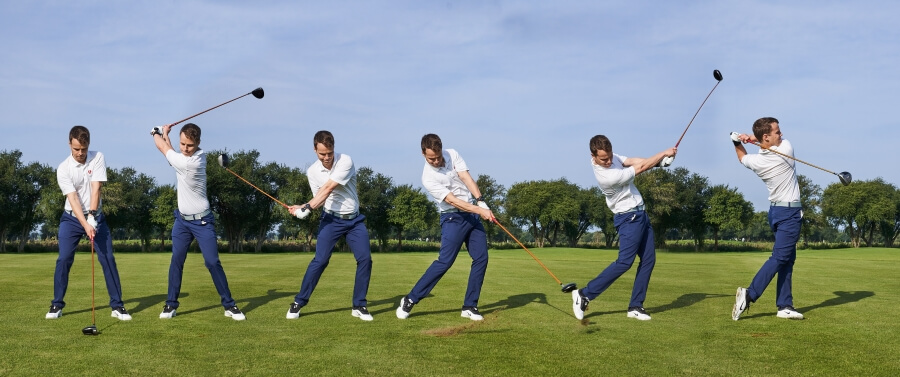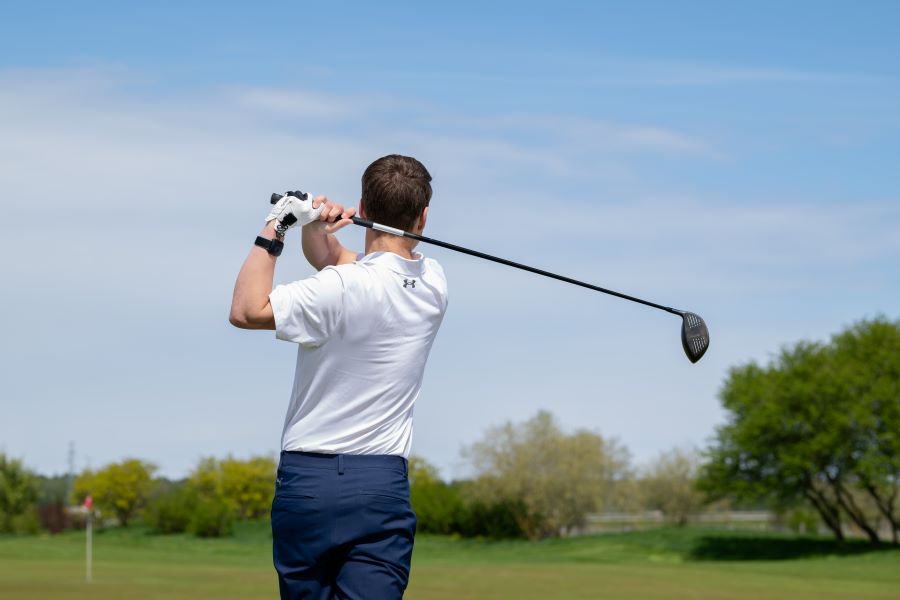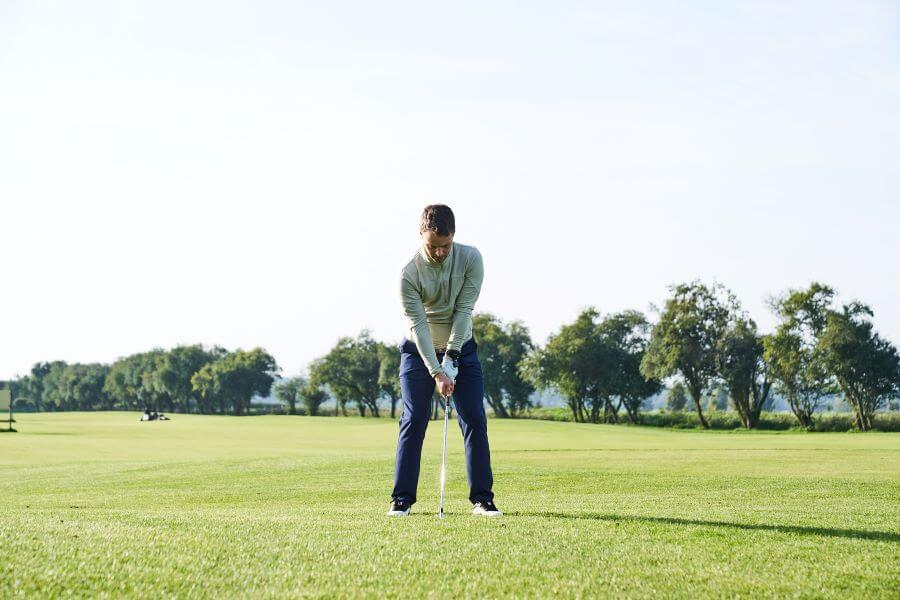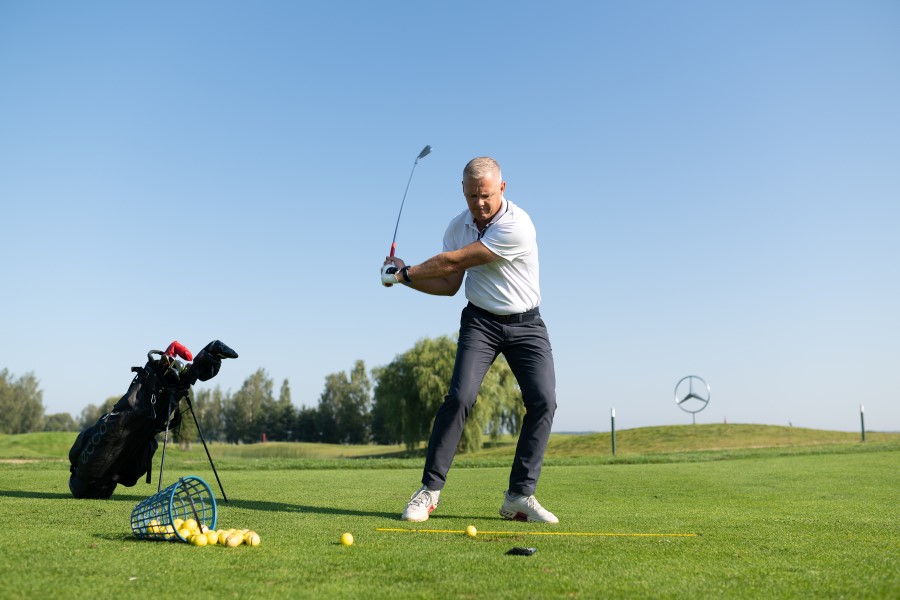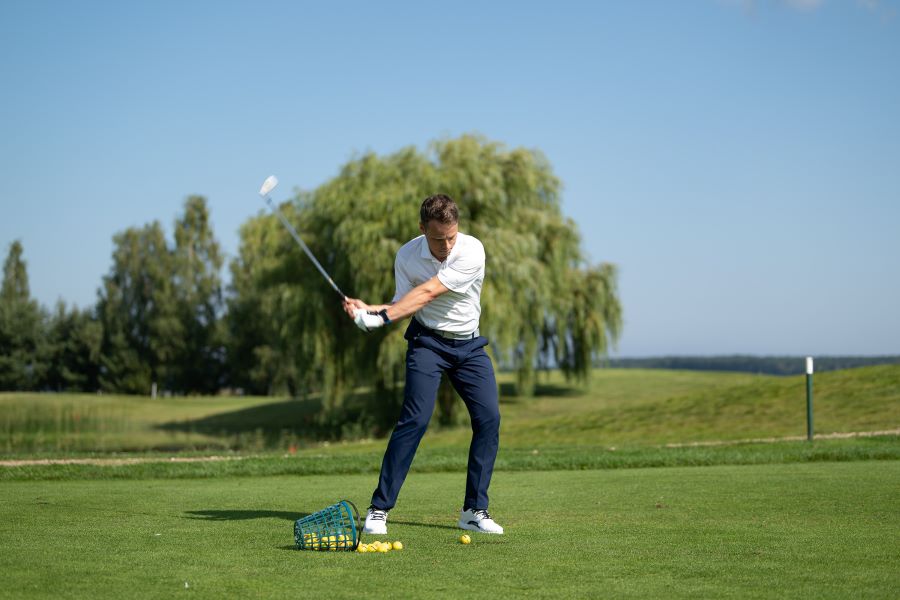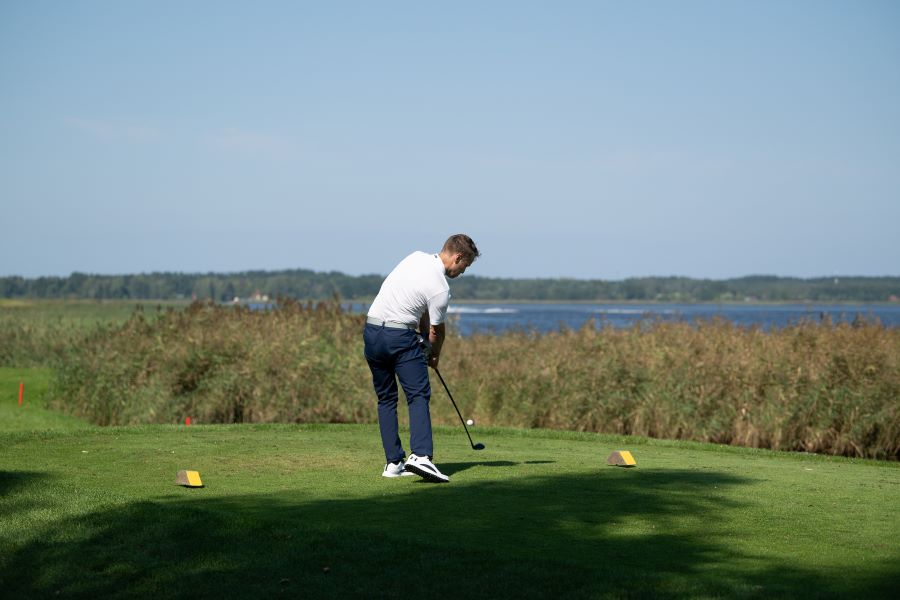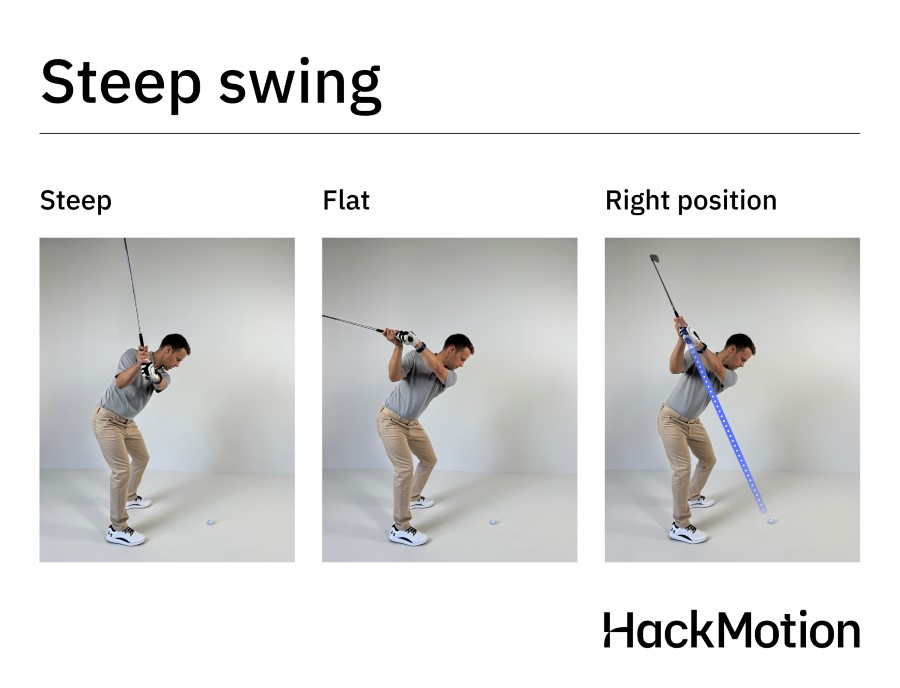Fix Your Pull Hook: Proven Strategies & Drills to Eliminate It Forever
A pull hook starts left and then curves even farther left. It’s a tough shot to watch because it often travels quite far, but the direction can leave you in significant trouble.
If you struggle with a pull hook, you will benefit from working on clubface control, alignment, wrist action, and ball position.
We’ve put together some drills and actionable steps to help you fix your pull hook for good.
How to Fix a Pull Hook in Golf (Key Takeaways)
If you don’t have time to work on drills and exercises to fix your pull hook right now, here are the most important tips to keep in mind:
- Pay close attention to the transition at the top of your golf swing; most golfers who struggle with a pull hook fail to engage the lower body effectively.
- Your lead wrist should be flat at the top of your backswing, allowing your lower body to rotate through without slowing down.
- Get the ball position and setup correct to make it easier to swing through the target without coming over the top.
- Wearing the HackMotion wrist sensor while you practice will help you control the clubface and hit straighter, more accurate shots.
Contents
What are the Most Common Reasons for a Pull Hook?
The most common reason for a pull hook is swinging over the top with a closed clubface. If your swing becomes too reliant on the arms and lacks lower body engagement, a pull hook is often the result.
Here are a few other reasons you may be hitting a pull hook:
- Aiming too far right of the target and swinging across your body.
- A grip that is too strong, usually introduced to combat a slice.
- Ball position is too far forward in your stance.
- An over-the-top swing caused by too much extension in the lead wrist at the top of the backswing.
- Lack of clubface control at impact, leading to a closed face.
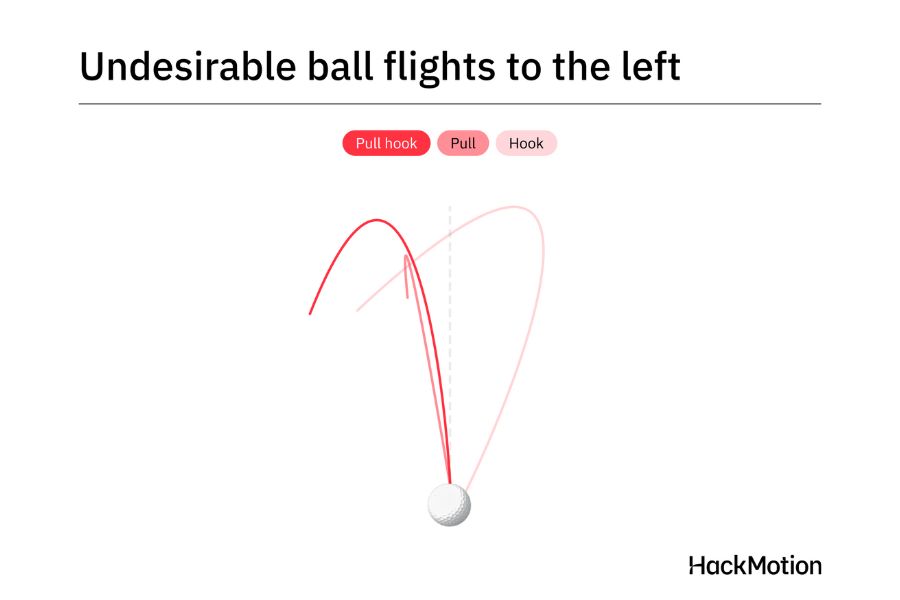
4 Effective Ways to Fix Your Pull Hook in Golf
Now you have the details about what causes a pull hook in golf, how can you fix it?
Here are some of the best drills and tips to stop pull hooking your driver, irons, and wedges (though it may be a less common shot with wedges).
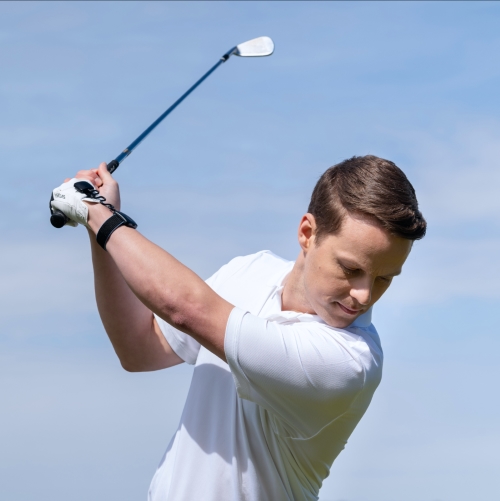
Take control of your golf game and stop pull hooking by mastering wrist mechanics.
1. Get Your Alignment More Down the Line
Fixing alignment takes attention to detail and a bit of practice.
First, make sure that you are practicing using alignment sticks. It’s really simple to set up with sticks on the range so that you know you are square.
Once you have the alignment down on the range, start to take your time approaching each shot and ensuring you are setting yourself up directly to the target.
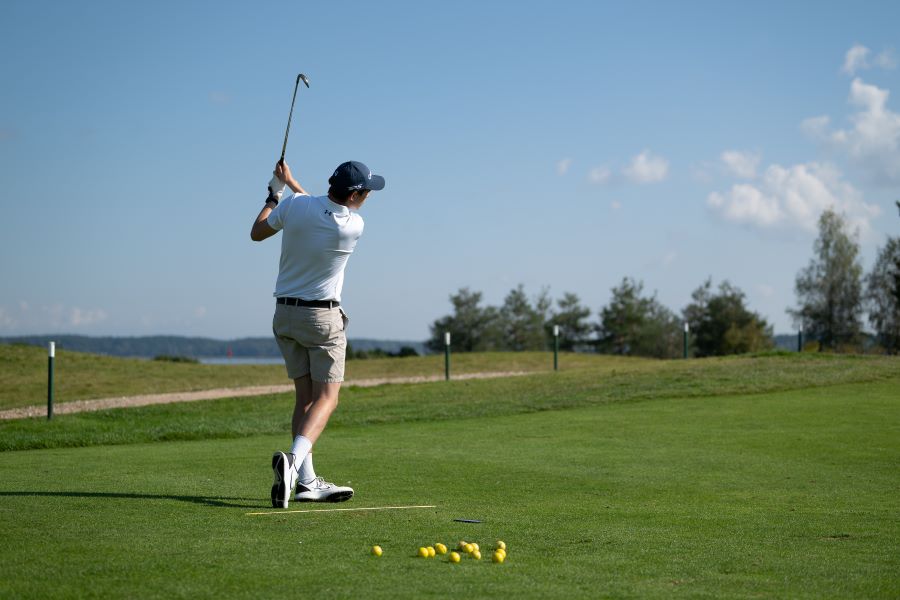
Proper alignment should be part of your pre-shot routine. Always approach the golf ball from behind, never from the side.
After each shot you hit, try to determine whether the result was because of an alignment issue or a poor shot.
You’ll start aiming more to the right to fix the pull hook, but this sets you up to cross over and hit a larger pull hook. Aim directly at the target and then learn to control the clubface; it will fix the pull hook.
2. Weaken the Grip
A strong grip fixes slices but can encourage more of a pull hook ball flight.
If you become confident in how your left hand (right-handed golfer) is sitting on the club, you can then incorporate the right hand into place.
It’s worth mentioning that a small grip change can have a big impact.
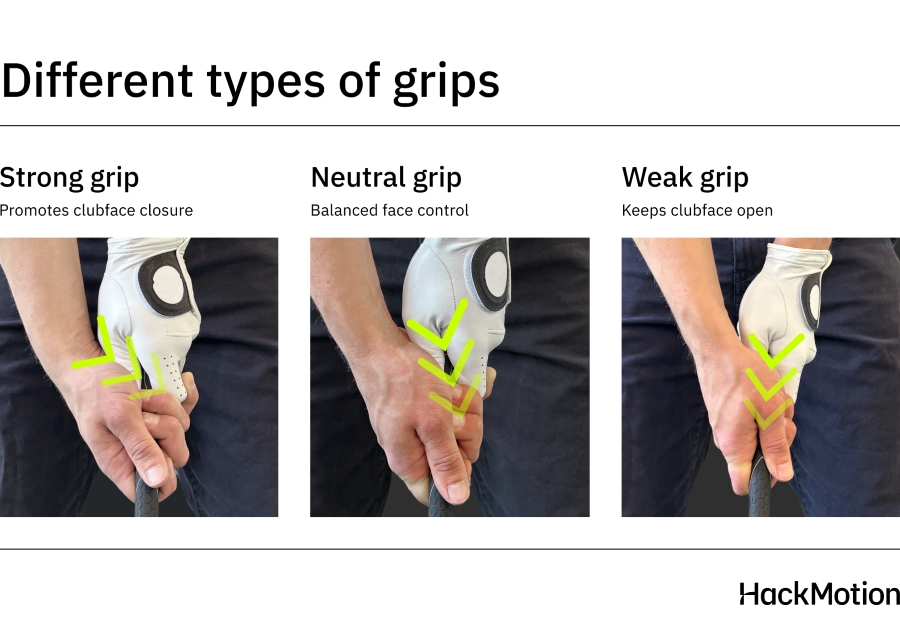
Don’t feel the need to exaggerate the new grip position. Instead, allow just a slight turn of the hand back to neutral and see how it helps.
You will be amazed how much impact just a ¼ turn of the hands can have on ball flight and sometimes even distance.
3. Ball Position Centered
Ball position should be centered for the majority of your clubs. Drivers and fairway woods are mostly off of the inside left heel.
The ball position is an easy fix.
Start using alignment sticks when you practice determining where the center of your stance is.
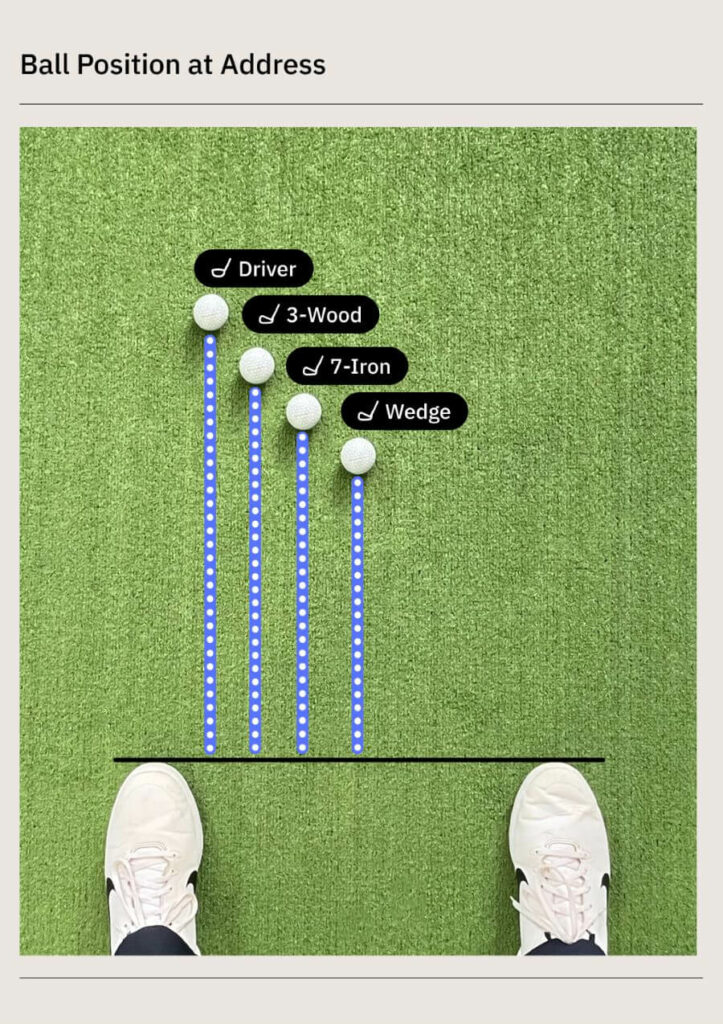
If the ball starts going somewhat straight or ends up with a slight draw, you will know the rest of your issue is a slightly closed clubface at impact.
4. Control the Clubface Angle
The clubface angle causes the hook part of a pull hook.
Swinging the club over the top and having a closed clubface will change your shot from straight to pull to pull hook.
HackMotion wrist sensor is the perfect tool for fixing a pull hook because it can help set the proper wrist position at setup, the top of the backswing, and then again at impact.

Golfers who hook the ball often have too much flex in their lead wrist position.
If you set up with that strong grip (HackMotion can tell you) and then on the backswing, you continue to add to that flexion and close the clubface; it’s nearly impossible to recover near impact.
Additional Drills to Fix Pull Hook in Golf
One of the best ways to work on correcting a pull hook is to incorporate some drills into your practice routine. These drills can range from simple exercises to more in-depth practice routines.
The key is they all help to get the clubface square at impact and the club on the correct path.
Incorporate the Lower Body
One of the best ways to fix any kind of golf shot that goes left is to properly incorporate the lower body into the swing. Practicing this on the range is important, but you have to know how the body should move.
This video will give you some great guidelines and tips for getting your club moving in the right direction.
Feel the Opposite Drill
With an alignment stick, a club, and a few golf balls, you should have no trouble setting up a drill that lets you feel the opposite of a pull hook.
Interestingly, you will want to feel the clubhead move left after you make contact.
Start this drill with half swings and gradually move to fuller swings.
Tuck and Turn Shoulder Drill
This drill from Eric Cogorno is a great choice to work on if you find the pull to be your most common miss.
If you start getting rid of the pull, and you can learn to square your clubface with the HackMotion, the results should be much straighter shots.
Pump Drill
When you have your clubface angle mostly squared up, you can then start to work on the path and fix the pull park of the pull hook.
This drill requires you to use an alignment stick and place it on the ground at an angle in your backswing.
As you transition from backswing to downswing, you’ll try and match your club up to this shaft. Do it three to four times and then take a complete swing.
FAQs
The pull hook isn’t pretty, but most golfers can turn it into just a pull or just a hook in a matter of a few minutes, and then the HackMotion can get you the rest of the way.
Why am I hitting a pull hook?
A pull hook occurs when you swing the club over the top, and the clubface is closed. To fix a pull hook in golf, learn to improve ball position, alignment, and wrist position at the top of your golf swing.
How do I stop hitting pull hooks on my irons?
To stop hitting pull hooks on your irons, check your ball position; it is often an issue because the ball position is too far forward. Ensure that your club is square at the top and your grip is not too strong.
Lastly, work on letting the club drop into place at the top of your swing; don’t initiate the transition from backswing to downswing with the upper body.
Does a steep swing cause a pull hook?
A steep golf swing is not typically the cause of a pull hook. In fact, a shallow swing is more likely to be the cause. However, an over-the-top swing with a closed clubface can cause pulling golf shots and seeing a hook.
Does hitting off the toe cause a hook?
Hitting off the toe of the club will cause the spin axis to turn left, and it can cause more of a right-to-left ball flight.
I would not expect this to cause a hook all on its own simply because most golf clubs are relatively stable at impact, which will help reduce some of this side spin.
Final Thoughts
Getting your pull hook under control will take a few sessions at the range and some work with your HackMotion learning to square the clubface.
If you can use HackMotion to control the clubface and get the club on the proper path (not over the top), your ability to hit good golf shots with confidence will greatly increase.





